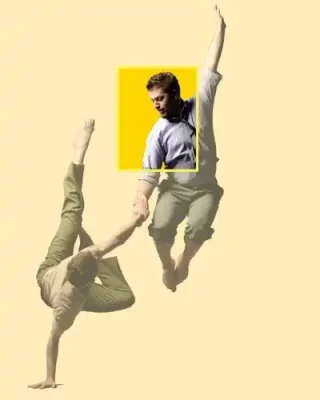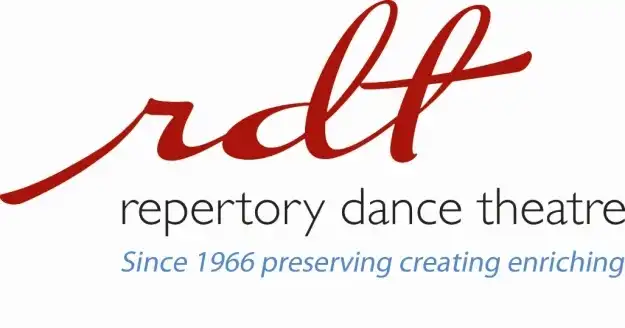Freedom from Spirit: Repertory Dance Theater presents Vanguard
Art
On Oct. 6-8, Repertory Dance Theater commenced its 2011-2012 season by presenting Vanguard. The program, a showcase of key works by groundbreaking choreographers, featured the work of Merce Cunningham and Yvonne Rainer.
Any repertory dance company will, by definition, perform works by established “classical” artists—much as the Utah Symphony is currently surveying the works of the legendary composer Igor Stravinsky. Consequently, one might have expected Vanguard to be a guaranteed crowd pleaser, or at least to offer something for (almost) everyone. However, such was not the case. Instead, RDT’s season opener presented those assembled with a suite of works conceived intentionally to violate the expectations and demands of audiences past and present.
Prior to the opening, a small squadron of UTA buses had advertised the event by displaying a billboard-sized portrait photo (“Do You Know This Man?”) of the elderly but imposing Cunningham, who died in 2009. This tactic might have manifested some considerable anxiety on the part of the company regarding the public’s lack of awareness of avant-garde choreography. However, the disappointing turnout at Friday night’s performance may in fact have reflected not local ignorance so much as a genuine rejection of more challenging forms of modern dance.
Whatever the case, RDT’s presentation of Vanguard showed admirable courage and commitment to the company’s raison d’etre. It also gave the company’s dancers an opportunity to exhibit skills, moves and choreographic effects not frequently seen on stage, much less appreciated, in Utah.
The first piece of the night was Merce Cunninghams’ Scramble (1967). The program notes discussed Cunningham in terms of his potential relation to Abstract Expressionism and the Action Painters (Jackson Pollock, Willem de Kooning, Franz Klein) of the New York School. This, however, is misleading. Scramble’s date, not to mention its actual content, establishes it as much closer to the Post-Expressionist works of painter Frank Stella (who designed the piece’s set and costumes) and the color-field paintings of The Washington School (Morris Louis, Kenneth Noland, Gene Davis). Cunningham’s choreography, which favors stationary stances, falls and lunges as opposed to more flowing or heaving motions, seeks to forestall any possibility of audience investment in the interiority or feelings of individual dancers.
As in the drip paintings of Morris Louis, whose pigment-impregnated surfaces appear to be diaphanous veils, form and motion in Cunningham’s choreography result not from moods or inner urges, but rather from the external force of gravity pulling bodies downward. At no point does Cunningham succumb to the foundational lie which grounds ballet and more traditional modern dance, that the human body is weightless. Consequently, whatever surging motions do occur in Cunningham’s work invariably take the form of literal, which is to say forced, bursts of energy.
Cunningham rejects the sweeping movements common to modern dance. He dislocates motion from familiar parts of the body, such as hands and feet, and relocates it instead within the elbows, knees and abdominal wall. Or, he defamiliarizes grasping and reaching motions, normally associated with the hands, by displacing them onto the feet. Rather than communicatively gesturing, the body in Scramble, whenever it does appear motivated by an internal force, simply twitches and bucks.
At first it is easy to perceive such motion as expression, but to do so would be incorrect. For such bodily events, in their instantaneity, recall those induced by the early scientist Luigi Galvani, when he touched the sciatic nerve of frogs with an electrode. In light of such experiments, the body appear no longer to be an expressive vehicle of the human spirit, but simply a conductor of “animal electricity.” Cunningham’s choreography, in keeping with this conception of the human form, might well be considered a kind of Galvanic dance. Nor does such a view of Cunningham fail to find a correlative in his life partner and collaborator, the composer John Cage, who was known for his pioneering work in electronic music and video art.

Frank Stella’s set and costumes helped add—by way of negation—to the non-expressive character of Scramble. Consisting simply of banners and monochromatic leotards, the basic task performed by this design was to suspend any impression that the stage was either landscape or architecture, and to erase any distinction between space and the bodies located within it. Consequently, Scramble strives to eschew not only representation, narration and inner psychology, but also any effect of Gestalt, the existential encounter with a figure standing forth against a background. In removing or frustrating these basic givens of human experience, Cunningham achieves two of the hallmarks of high-modernist painting: an unbroken “all-over” surface, and the collapse of figure and ground into an obstinate flatness.
The next two pieces of the evening, choreographed by radical feminist Yvonne Rainer, employed similar strategies of defamiliarization and depersonalization. However, whereas Scramble combats the notion of Gestalt in order to achieve an uncompromising “over-all” effect, Trio A (1966) and Chair Pillow (1969) instead comprise two conscious assaults on that same achievement, two challenges to the idea of the Gesamtkunstwerk, or formally unified composition. Trio A opens with a solitary dancer.
Here, the dancer’s movements appear alarmingly blasé, indeed highly mechanized. No attempt is made to conceal the fact that the choreography is just that: choreography—an entirely prescribed series of bodily movements. Each new motion appears as the unthinking execution of a command mandated by a director composing, or programming, in a kind of binary code: up/down, near/far, left/right, straight/curved, fast/slow, start/stop, etc. The resulting effect is that of a perpetual-motion machine, an apparatus whose inversions and retrogrades parallel those of a baroque fugue.
The tension produced by this de-humanized movement is heightened by the dance’s score: It emerges in the form of audible scuffs and squeaks from the dancer’s shoes rather than from musical instruments and electronic sound equipment. Or, it might be more accurate to say that Trio A deliberately shatters the conventional and assumed correspondence between dance and music through the violent elision of any score, just one choreographic étant donné, or ‘given’, that the loud shoes make it impossible to ignore. In the second section of the piece, Rainer exacerbates this radical fracturing—it’s tempting here to say deconstruction—of the basic components of modern dance.
This is accomplished through the forced superimposition of the Chambers Brothers’ classic “Take Me To The River” atop an ensemble of dancers whose movements rigidly refuse any mutual interaction or personal conviction, deny any necessary relationship between dance and music. The automated and veritably solipsistic movements of the members of the company stand in sharpest possible contrast to anything resembling “soul.”
Rainer’s work, which might best be considered not Post-Expressionist so much as Minimalist or Conceptualist, follows along the same lines in Chair Pillow. In it, movements, all redolent of boredom and insomnia, take the form of futile and infinite struggles. Nietzsche’s eternal return, emblematized by the myth of Sisyphus pushing a rock up a hill in Hades, is here stripped by Rainer of all romantic grandeur and banalized, restaged as obsessive-compulsive disorder, or a neurotic bedtime ritual. All deadpan irony withstanding, it is hard to imagine modern dance feeling even one tint “whiter.” The effect is agonizingly awkward and, no doubt, entirely intentional.
The final piece of the evening, Gamut (2011), was choreographed by the RDT dancers themselves. If the work of Cunningham and Rainer struck the audience as incomprehensible and frustrating, this piece, at long last, came to the audience’s rescue, as a sort of choreographic deus ex machina. Largely improvised, Gamut allowed key dancers to display some undeniably impressive skills while it foregrounded a broad array of technique specific to the featured artists. Indeed, Gamut might be seen as a kind of user’s guide to Cunningham and Rainer. In acknowledgment of Rainer’s contention that the edifice of patriarchy can indeed be dismantled with the tools of patriarchy, but only if the patriarchs’ tools are properly exposed, the piece opens with a stage hand visibly cueing the iPod to which the dancers will dance.
This revelation of the normally hidden apparatus of production is repeated by different members of the company at various times throughout the piece, most likely ad libitum and always so as to interrupt the action. Midway through the piece the dancers employ various minor props, such as playing cards and fedoras (à la “Luck Be A Lady Tonight”), to reveal Cunningham and Rainer’s recourse to gaming and other chance operations in their choreography.
These bids at demystification, consistently performed in a spirit of good-natured fun, did much to reassure audience members that all previous choreography was both intelligible and benign. However, one can’t help but observe that mediation of this sort also does much to dull the razor edge of the avant-garde. Whether or not the work of Cunningham and Rainer benefits or suffers from the addition of such friendly and charitable acts of pedagogy I will leave to the reader to consider.
Repertory Dance Theater continues its 2011-2012 season with Snapshots, which features the choreography of Zvi Gotheiner and the RDT dancers. The show will be performed November 18 and 19 in the Jeanné Wagner Theater.
